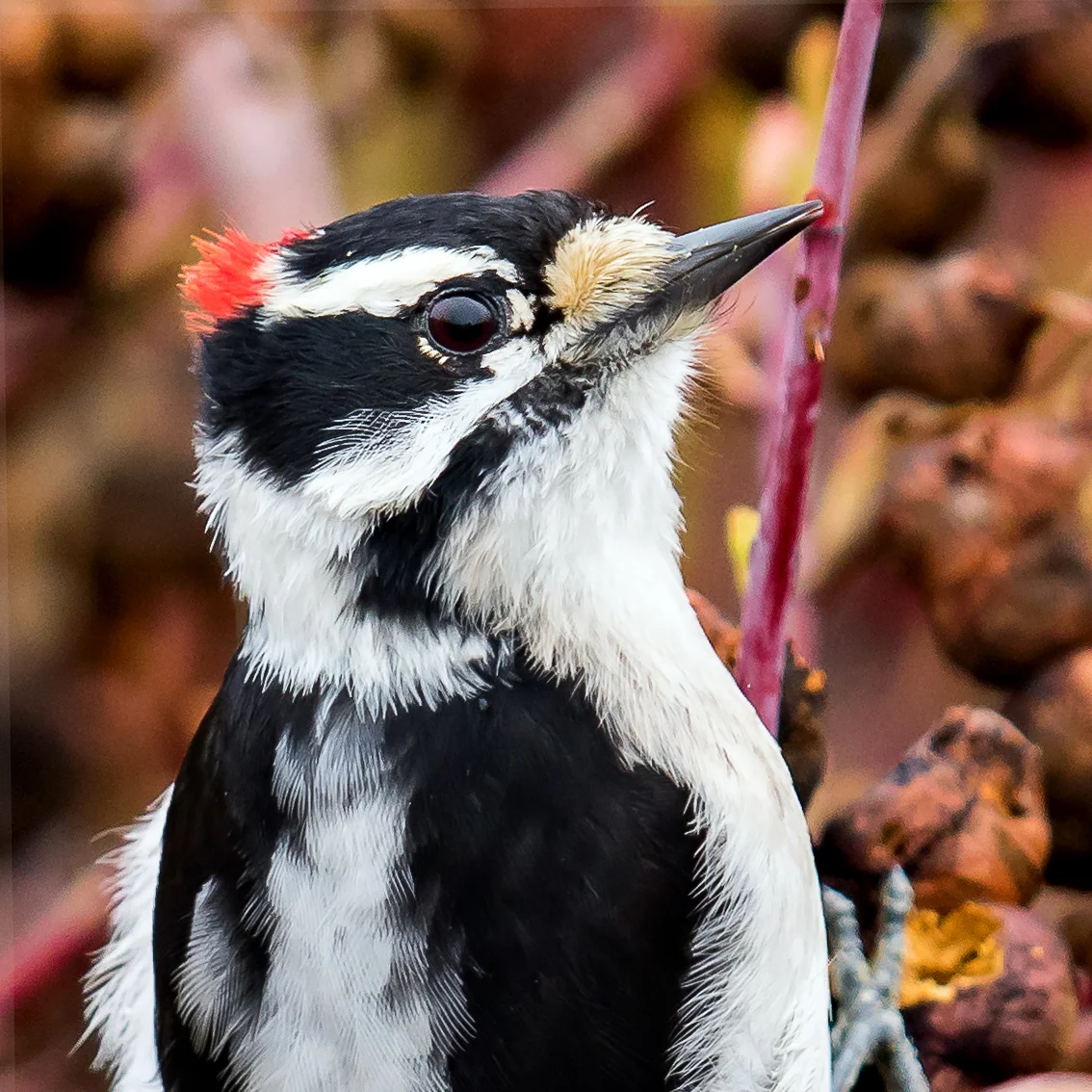Gallery - Jays and Woodpeckers
The Black-billed Magpie is a flashy black and white corvid that prefers open areas in the western United States and Canada. In Washington State it is common east of the Cascade Range.
It flies like a crow. It catches insects in mid-air. It must be a Lewis’s Woodpecker. Learn more about July’s Bird of the Month.
A bird of the forest that loves large trees, the Hairy Woodpecker is an exciting bird to see. It is often found hammering on the trunk or tree limb in search of larvae of wood-boring beetles, other beetles, ants and other larvae. It will also eat some berries and nuts, and feed at the sap sites of sapsuckers.
The Red-breasted Sapsucker (RBSA) is about 8.5” long with a wingspan or 16”. The genus name Sphyrapicus (sfie-rah-PIE-kus) is from Greek spyhra, a hammer, or mallet, in reference to the bill and its use, and Latin picus, a woodpecker.
The species name stelleri is for Georg Wilhelm Steller, a German zoologist, and member of Vitus Bering’s Arctic expedition of 1741, who along the coast of Alaska shot the first of the species known to science. It is one of only two crested jays. Some liken them to "crows in blue suits."
The Northern Flicker (NOFL) varies from 12-14" in length. All forms of the NOFL are barred black and brown above with a white rump patch. The underparts are buff-white with black spotting, and all have a broad black necklace.
The Gray Jay is a tough resident of spruce and fir forests in high mountains where it remains throughout the year.
The Downy is 6-6.5 inches while Hairy is much larger at 9-9.5 inches. Both have a white back and white underparts, white-spotted black wings and black-and-white streaked faces. The males have red on the nape and females have no red.
In the summer of 2016 the American Ornithologists’ Union (AOU) reviewed the status of the Western Scrub-Jay and decided to split off two of the subspecies into two “new” species, the California Scrub-Jay (Aphelocoma californica) and Woodhouse’s Scrub-Jay (A. woodhouseii).
The Pileated Woodpecker (PIWO) is about 16-1/2” long with a 29’ wingspan. The genus name Dryocopus (dry-OCK-oh-pus) is from the Greek drys, a tree, especially an oak, and kopis, cleaver; a “tree cleaver” or “wood cutter”.
Clark’s Nutcracker was named for Captain William Clark by Alexander Wilson who analyzed the skin brought to him following the Lewis and Clark Expedition. Clark initially thought the bird was a species of woodpecker but later it was classified as a jay.
Long a part of Northwest lore the Common Raven has been a part of the mythology of tribal groups of the Northwest Coast.












